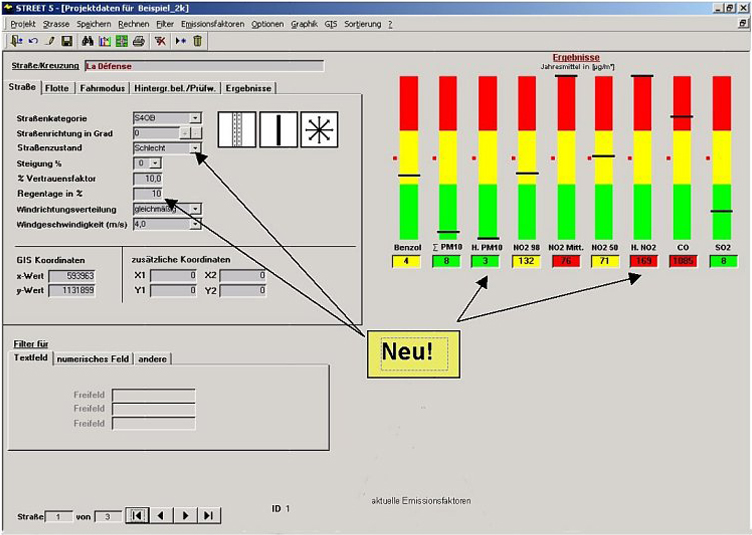|
|
| METHODS OF INFORMATION ACQUISITION FOR PLANNING
(MEASUREMENTS, WIND TUNNELS, NUMERICAL MODELLING) |  |
| | | |
 4.3.3 The Model STREET for Estimating Traffic-Produced Pollution 4.3.3 The Model STREET for Estimating Traffic-Produced Pollution |
On the basis of the model MISKAM (see Chapter 4.3.6), the screening model STREET (PFEIFER et al., 1996; VDI 3782, Section 8, www.kttumwelt.com ) was developed for the Environmental Ministry of Baden-Württemberg for simple estimations of emissions produced by traffic. Annual average values and 98-percentiles of pollutants are calculated from traffic densities, the reference year of vehicle production, the type of driving, the category of road, the type of existing pollution, and the meteorological parameters of wind direction and average wind velocity. The specific flow and dispersal conditions of the road categories under consideration were simulated in detail with MISKAM and provided as basis data.
The model can also be used for street crossings and mergings. The road categories give equal consideration to built and unbuilt areas.
The screening model is especially for issues of compliance with limits on the 39th BImSchV applied. STREET 5.10 (2004) runs under Windows. Figure 4/21a shows an example.
|
|
| | | |
 |
| Fig. 4/21a: Windows user interface of the STREET program for a selected example |
|
